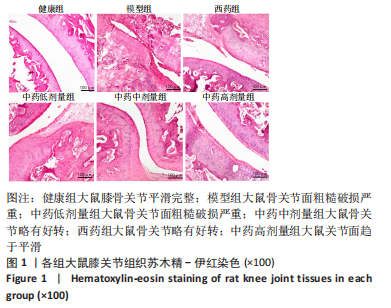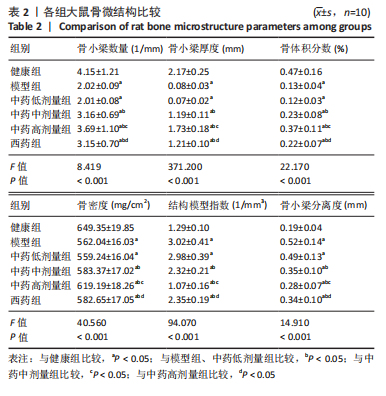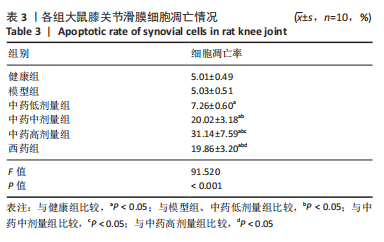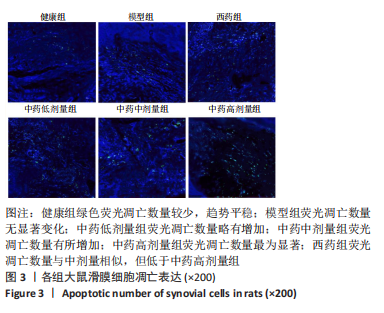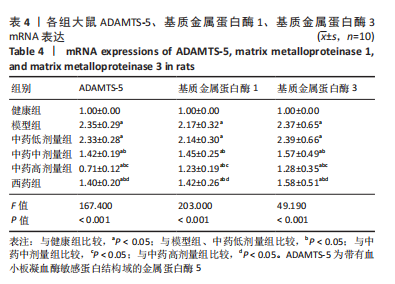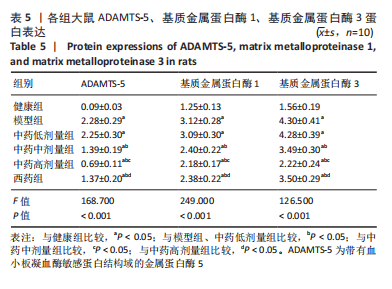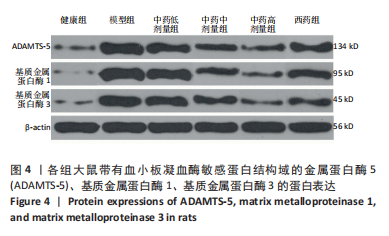[1] 王骏,杜志凌,马斌,等.膝骨关节炎患者基质金属蛋白酶-13和Ⅱ型胶原羧基交联肽血清水平及临床意义探讨[J].中国药物与临床,2020,20(19):3258-3260.
[2] 张文伟,邰东旭.膝骨关节炎中医外治法研究进展[J].江西中医药, 2022,53(6):70-72.
[3] 詹倩,胡广操,王敏龙,等.补肾活血复方对照非甾体类抗炎药治疗膝骨关节炎的系统评价[J].浙江中西医结合杂志,2019,29(4):334-339.
[4] 郭洁梅,陈鹏,蔡唐彦,等.从“筋骨、痹痿、虚实、动静、刚柔”谈膝骨关节炎功能障碍的特点[J].康复学报,2021,31(1):69-72+82.
[5] 郑斌,梅伟,魏成建,等.中医治疗膝骨关节炎研究进展[J].湖北中医药大学学报,2016,18(2):114-117.
[6] 张志宇,党亚军. 关节镜下膝关节清理术结合去神经化治疗对膝骨关节炎合并软骨损伤患者血清软骨代谢产物及相关基质金属蛋白酶水平的影响[J]. 临床医学研究与实践,2021,6(17): 93-95.
[7] 詹红生,潘富伟.膝骨关节炎治疗中不可或缺的基础治疗——《膝骨关节炎中医诊疗指南(2020年版)》解读[J].中医正骨,2021, 33(8):1-6.
[8] 尤君怡,龚正丰,梁国强,等.吴门芪藤汤对大鼠膝骨关节炎成纤维样滑膜细胞氨基末端激酶的影响[J].中国中医骨伤科杂志,2019, 27(10):5-9.
[9] 徐凯捷,欧阳桂林.细胞因子和缺氧诱导因子及微RNA对类风湿关节炎滑膜细胞的作用[J].医学综述,2020,26(21):4179-4184+4189.
[10] 高山,孙乾坤,王敬威,等.膝骨关节炎与相关金属蛋白酶的基因多态性关联研究[J].中华关节外科杂志(电子版),2020,14(4):454-460.
[11] 骆晓飞,魏瑄,王金良,等.膝骨性关节炎患者胫骨软骨下骨骨微结构改变的CT评价[J].中国组织工程研究,2020,24(15):2399-2404.
[12] 吴疆,吴龙,马龙,等.SOST和β-catenin在不同分期膝骨关节炎患者软骨及软骨下骨表达的研究[J]. 中国骨质疏松杂志,2016,22(6): 689-694.
[13] 艾尼瓦尔·艾赛特, 迪里木拉提·巴吾冬. 绝经后女性膝关节骨性关节炎与胫骨软骨下骨骨密度的相关性研究[J]. 中国骨质疏松杂志,2018,24(7):918-921.
[14] 邢华,龚利,邵盛,等.基于肌肉激活模式膝骨关节炎物理治疗研究进展[J].辽宁中医药大学学报,2020,22(3):80-83.
[15] 朱立国,周帅琪,魏戌,等.中药治疗膝骨关节炎的临床研究进展[J].医学综述,2021,27(5):973-977.
[16] 吴静雅,李永浩.加服益气活血通络汤治疗缺血性中风疗效观察[J].广西中医药,2020,43(5):14-15.
[17] 段航,卢敏,邝高艳,等.卢敏运用补气活血通络汤加减治疗膝骨关节炎验案举隅[J].湖南中医杂志,2019,35(4):98-100.
[18] 夏汉庭,曹端广,杨佛,等.加味阳和汤对膝骨关节炎大鼠模型基质金属蛋白酶调控及软骨保护作用研究[J].江西中医药,2020, 51(3):57-61.
[19] 王锴,董雪,林剑浩.影响膝关节骨关节炎患者生活质量预后因素的队列研究[J].中华骨科杂志,2019,39(18):1149-1156.
[20] 廖建钊,章晓云,张璇,等.骨性关节炎发生发展中的分子信号通路[J].中国组织工程研究,2020,24(21):3394-3400.
[21] 张春雷,李冀.膝骨关节炎的中医药治疗进展[J].中医药学报,2022, 50(1):106-110.
[22] 徐志为,韩杰,余绍涌,等.膝骨性关节炎中医药治疗研究进展[J].辽宁中医药大学学报,2020,22(12):205-208.
[23] 管小青,许钒.养阴活血通络汤治疗类风湿性关节炎疗效及对患者关节液TNF-α,IL-1和PGE2的影响[J].陕西中医,2020,41(8):1098-1100.
[24] 赵晋,谢燕燕,张立智,等.膝骨关节炎患者软骨和软骨下骨微结构改变[J].中华实验外科杂志,2019,36(7):1313-1315.
[25] 代李嘉,潘胜杰,杨君,等.老年膝骨关节炎中医证型与骨代谢指标及炎性因子相关性研究[J].湖北中医药大学学报,2020,22(6):98-101.
[26] 陈冬冬,鲁超,朱添,等.通络汤对骨性关节炎模型髓样分化因子及相关蛋白的影响研究[J]. 中国中医骨伤科杂志,2019,27(6):9-12.
[27] 李凯明,朱立国,王尚全,等.基于网络药理学探讨黄芪-当归药对治疗膝骨关节炎的作用机制研究[J].中华中医药学刊,2021, 39(5):152-156+286-287.
[28] 郑泽陆,张瀚文,梁栋,等.川芎-牛膝药对治疗膝骨关节炎的网络药理学探究[J].世界中西医结合杂志,2021,16(5):890-896.
[29] 罗利飞,管敏昌,童静玲,等.续断对兔膝骨关节炎模型滑膜细胞凋亡蛋白Bcl-2和Fas-L表达影响的实验研究[J].中国卫生检验杂志,2020,30(11):1322-1324.
[30] 邬波,马旭,柳椰,等.膝关节骨关节炎患者软骨炎症因子表达与病变程度的相关性[J].中国组织工程研究,2020,24(2):236-241.
[31] 宋在鑫,柳清泳,王晓军,等.补肾通络汤联合甲氨蝶呤对类风湿关节炎患者炎症细胞因子,骨代谢标志物及血管新生相关因子的影响[J].现代生物医学进展,2020,20(19):3774-3778+3783.
[32] 李凯明,朱立国,王尚全,等.基于网络药理学的白芍-甘草药对治疗膝骨关节炎的作用机制研究[J].时珍国医国药,2020,31(10): 2339-2343.
[33] 暴丁溯,郭晓光,覃波,等.芍药甘草附子汤调节软骨细胞凋亡与自噬治疗膝骨关节炎的临床研究[J].河南中医,2021,41(10):1495-1499.
[34] 毛珍,江润,刘永红,等.电针“痛敏穴”联合热敏灸对膝骨性关节炎的临床观察及对血脂水平、ADAMTS-4的影响[J].海南医学院学报,2021,27(16):1213-1217.
[35] 郑洁,赵莉平,胡亚莉,等.青藤碱对兔膝骨关节炎模型组织形态学及关节液炎性细胞和聚集蛋白聚糖酶含量的影响[J].中国中医药信息杂志,2019,26(6):51-54.
[36] 冀海军,张永红.阳和汤含药血清对膝骨性关节炎兔膝软骨MMP-1、MMP-3和TIMP-1表达的影响[J].四川中医,2020,38(3):72-76.
[37] 李宁,郭利光,陈跃军,等.关节镜关节腔清理术后活血化瘀药物超声导入对膝骨性关节炎关节液中IL-17、CXCL12及MMP1表达的影响[J].中华中医药学刊,2021,39(6):148-150.
[38] 许云腾,陈达,谭雪,等.补肾壮筋汤抑制膝骨关节炎软骨退变机制研究[J].中华中医药杂志,2021,36(7):4178-4181.
[39] 周艳,罗凛.温经通络汤联合针灸治疗风寒湿痹型类风湿关节炎疗效及对血清Wnt-3α,β-catenin,BMP-2的影响[J].现代中西医结合杂志,2019,28(30):3375-3378.
[40] 邹俊萍,王永萍,张阳,等.甘草酸、桂皮酸干预类风湿关节炎的作用研究——基于MicroRNA22调控HIF-1α-MMP1/3通路[J].亚太传统医药,2021,17(3):16-22. |

